A list of the world’s 50 best vineyards for wine tourism has named a Central Otago and a Hawke’s Bay estate as being among the best, as voted by ‘The World’s Top Wine Tourism Destination Academy‘.
And those two Kiwi vineyards rank in the top 20 in the world in the list out today.
The World’s Best
The global list of wine tourism destinations named Argentina’s Zuccardi Valle de Uco in the top spot for the second year running.
Bodega Garzón in Uruguay was second for a consecutive year and Domäne Wachau in Austria jumped 16 places to claim the third spot this year.
New Zealand’s Best
But Central Otago’s Rippon, on the Wanaka-Mt Aspiring Rd, placed 13th and was also named the best vineyard in Australasia. The Hawke’s Bay’s Craggy Range was 17th best on the list. Last year, the biodynamic Rippon was in eighth place and Craggy Range was 11th.
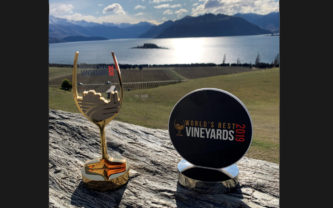
@13 THE BEST VINEYARD IN AUSTRALASIA: Rippon
Country: New Zealand
Wine region: Central Otago
Standout points: Jaw-droppingly beautiful views from the shore of Lake Wanaka; stunningly sleek biodynamic wines
Winemaker: Nick Mills
Wine style: Precise, site-specific noble varieties (Pinot Noir, Riesling, Gewürztraminer)
The list said Rippon had “jaw-droppingly beautiful views from the shore of Lake Wanaka, stunningly sleek biodynamic wines” from winemaker Nick Mills and “precise, site-specific noble varieties of Pinot Noir, Riesling, and Gewürztraminer”.
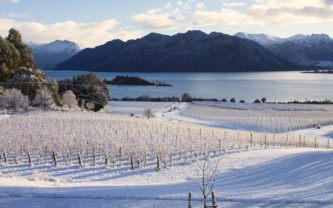
“What makes Rippon one of the most desirable estates in the world to visit? The wines, the views, and the people – in equal measure. Lake Wanaka, an ancient moraine lake, shimmering under the crystal light of a sunny Central Otago day must count as one of the most Instagrammable images on the planet. That Rippon maintains 15ha of vines in this immaculate landscape is wonder enough, but the quality and sense of place of its wholly estate-grown wines gives this little corner of heaven an extra special appeal,” the citation said.
Burgundy-trained fourth-generation Mills and his team were praised along with the organic and biodynamic methods and intensive handwork on display. “Rippon’s cellar door is open for small group tastings by uncharged appointment throughout the year. Expect to enjoy an informal yet informed tasting of some of the best wines of Central Otago as you’re guided through a selection of five or six Rippon wines by a switched-on member of the Rippon team, who will talk you through the farm, the family’s history and if you’re game, the arcane world of biodynamics,” the list said.
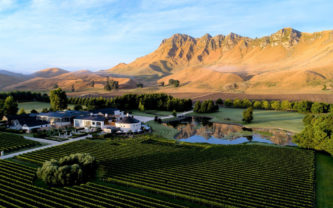
@17 Craggy Range
Country: New Zealand
Wine region: Hawke’s Bay
Standout points: Stunning location in the shadow of Te Mata Peak; luxury boutique accommodation; award-winning restaurant
Winemaker: Julian Grounds
Wine style: Multi-region, site-specific wines, everything from aromatic whites to Bordeaux blends, and terroir Syrahs and Chardonnays
On the 17th-ranked Craggy Range, the list said it was in a “stunning location in the shadow of Te Mata Peak, luxury boutique accommodation; award-winning restaurant”. It cited winemaker: Julian Grounds and said wines were “everything from aromatic whites to Bordeaux blends, and terroir Syrahs and Chardonnays.
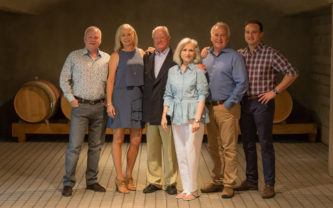
“Over the past 20 years, Terry and Mary Peabody have expended every possible effort to make Craggy Range an exceptional visitor experience. Whether it’s the cellar door, inspired by some of the Napa Valley’s leading wineries, the award-winning restaurant with 360-degree views of the local landscape, or Craggy Range’s exceptional boutique accommodation, expect nothing but the best in this beautiful little corner of Hawke’s Bay,” the list said of that operation established in 1998.
“When it came to establishing their vineyards, from the off Terry and Mary pursued an innovative multi-regional approach, focusing on the Gimblett Gravels in Hawke’s Bay, ideally suited to high-quality reds including Syrah, Merlot and Cabernet Sauvignon and Te Muna Rd in Martinborough – better for Pinot Noir and Sauvignon Blanc – to produce a range of wines that speak eloquently of their place,” the list said.
“On a typical cellar visit, former New Zealand sommelier of the year Michael Bancks greets guests at the door and begins the tour in the main cellar building, Sophia, where you learn the history of Craggy Range. Then it’s on to the subterranean barrel hall, The Quarry, where you will taste from the estate’s unreleased prestige collection wines still in the barrel.
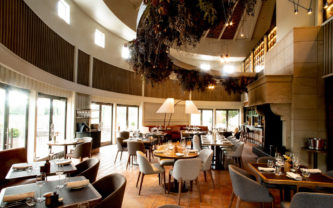
“From there, the tour moves on to the restaurant garden in the shadow of Te Mata peak. At the award-winning Craggy Range Restaurant, head chef Casey McDonald has devised a menu inspired by the elements and produced abundantly in Hawke’s Bay. Finally, it’s on to the sun terrace to enjoy a guided tasting of Craggy Range’s diverse multi-region range, with a variety of flight options available to suit each guest’s tastes,” the citation said.
The world’s best vineyards list is based on nominations from a voting academy made up of more than 500 wine experts, sommeliers, and travel correspondents from around the world. It aims to raise the profile of wine tourism and encourage travelers to enjoy wine-related experiences globally.


 Another great night with some lovely South American wines tasted. Must also say thank you to the committee members who prepared food matches. The combination of food with the wines gave the evening an interesting perspective.
Another great night with some lovely South American wines tasted. Must also say thank you to the committee members who prepared food matches. The combination of food with the wines gave the evening an interesting perspective.



 This was a very enjoyable tasting. Cenna was a very knowledgeable presenter with a great relaxed style. She admitted to a few nerves to start with but was soon interacting nicely with the members. The wines presented were great wines at a good value for money. The tasting was a good night.
This was a very enjoyable tasting. Cenna was a very knowledgeable presenter with a great relaxed style. She admitted to a few nerves to start with but was soon interacting nicely with the members. The wines presented were great wines at a good value for money. The tasting was a good night.